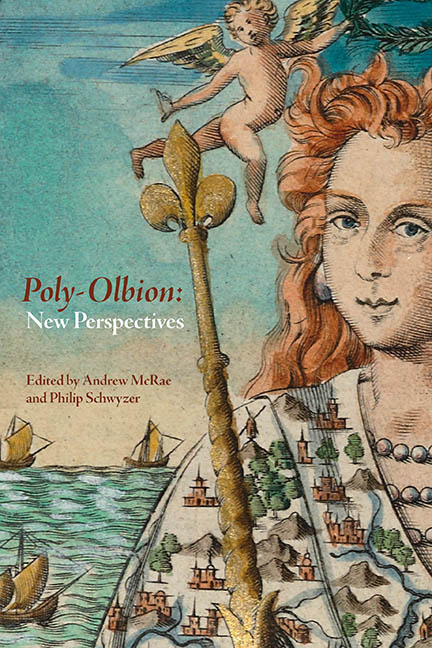6 - Curls to Curled Waves: Romance and Ecomaterial Assemblages in Michael Drayton' Poly-Olbion
Published online by Cambridge University Press: 27 March 2020
Summary
Michael Drayton's Poly-Olbion takes the matter of Britain literally. The personified material features of the land collectively sing the legends and histories that create a tale of national unity. The rivers, hills, and forests champion their local heroes and in multiple instances the figures of Britain’s legendary history are embedded within the material landscape: human and non-human coexisting in a mesh of shared experience. In Drayton's poem there are four layers at work in creating a cohesive poetic Britain: the material reality of the landscape, the personifications of its natural elements, the physical and psychological entity of the map, and the discursive fabric of the land – those histories, legends, and local forms of knowledge that make the place present. Drayton's particular combination of romance and chorographical topography addresses the world in a way fundamentally different than traditional four-fold allegorical or roman a clef traditions. Where the allegorical exegesis of Aquinas or Dante suggests that the reader move continually up and away from the literal or the material, Poly-Olbion exhibits a multidirectional system where the material, the representational, and the discursive persistently have effects on and between each other.
Take for instance the unfortunate river Camell in the first song, driven to hysteria by her connection to the death of King Arthur. The poem describes the Cornish river as being ‘frantick, ever since her British Arthurs blood, / By Mordreds murtherous hand was mingled with her flood … careless ever since how shee her course doe steere, / [she] muttreth to her selfe, in wandring here and there’ (1.183–92). Here Camell's watery material, mixing with the blood of Arthur, has a physical effect on the course of the river, which meanders and burbles over changeable banks. This topographical backformation is a pathetic fallacy, but one that highlights the river’s agency as much as Arthur's discursive potency. Camell's material connection to a historical story changes her representation as a nymph. Instead of a generic allegorical symbol of a wandering river, she is a romance figure quite literally touched by national tragedy who commemorates that event with physical action. The mixing of blood and water is a commingling of material, romance, and history, as well as a blurring of boundaries between human and watery bodies. In this multidirectional allegorical system, the material is present and meaningful at every level.
- Type
- Chapter
- Information
- Poly-Olbion: New Perspectives , pp. 132 - 144Publisher: Boydell & BrewerPrint publication year: 2020



